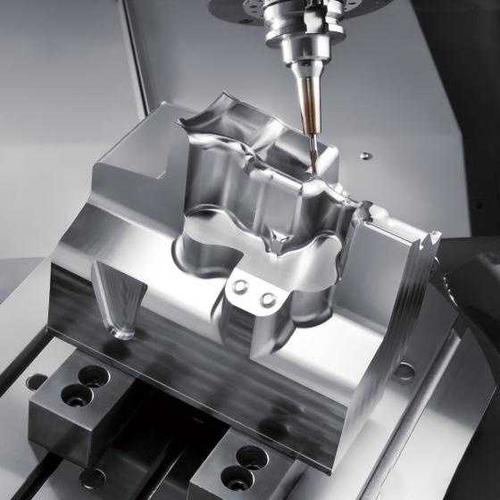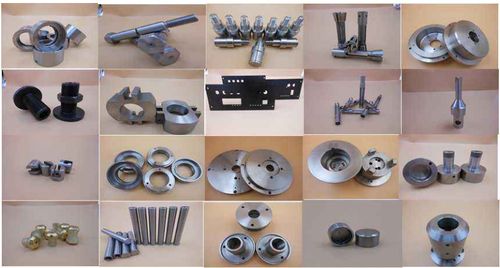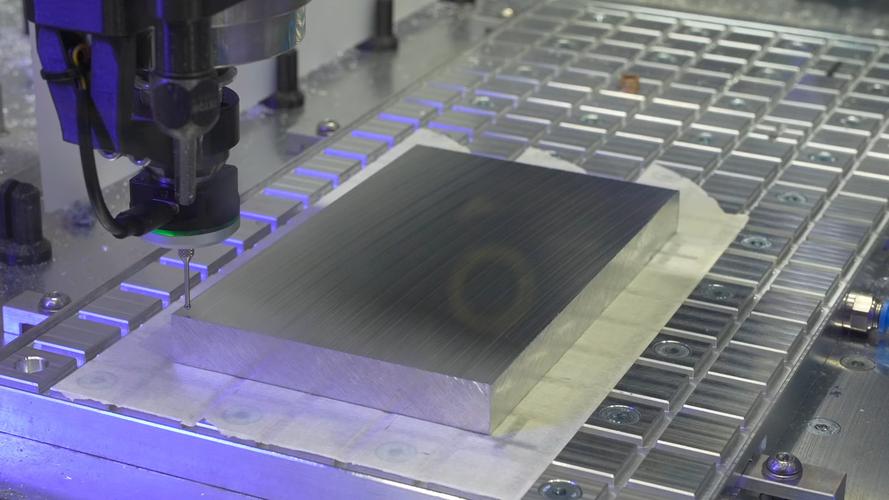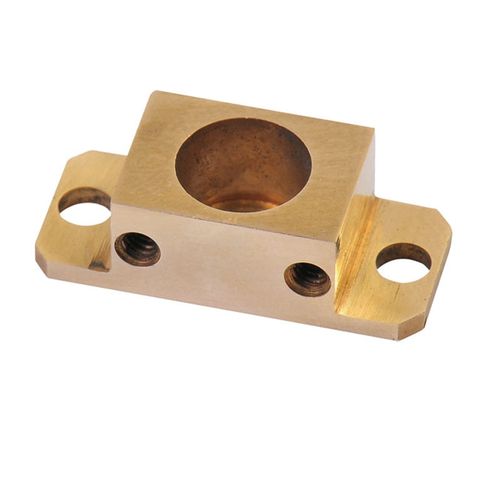Producing qualified CNC aerospace parts requires strict adherence to aerospace standards (e.g., AS9100), precision machining with 5-axis CNC systems, rigorous material control (certified alloys), comprehensive quality checks (NDT, CMM), and traceable processes. Key steps include design validation, compliant material sourcing, high-precision cutting, heat treatment, and compliance with regulatory requirements (FAA/EASA), ensuring parts meet safety and performance demands.

Detailed Analysis of Producing Qualified CNC Aerospace Parts
1. Technical Requirements & Equipment
Aerospace parts demand extreme precision and reliability, requiring advanced technical capabilities:
- High-Precision CNC Machines: 5-axis machining centers (e.g., DMG Mori NTX 2000) with positioning accuracy of ±0.0005mm are critical for complex geometries like turbine blades or wing ribs. These machines enable simultaneous multi-axis movement, ensuring tight tolerances (±0.001mm) for aerodynamic surfaces. Integration of thermal error compensation systems (sensors + real-time adjustment) reduces dimensional errors caused by temperature fluctuations by 40–60%.
- Advanced Cutting Technologies: To machine tough aerospace materials (titanium Ti-6Al-4V, Inconel 718), high-speed cutting (HSC) at 10,000–40,000 RPM minimizes heat-affected zones (HAZ), preventing material degradation. Cryogenic machining (using liquid nitrogen coolant) further reduces tool wear and HAZ in Inconel parts, ensuring surface integrity (no microcracks) critical for fatigue resistance.
- Metrology Tools: Coordinate Measuring Machines (CMMs) with ±0.0001mm accuracy and laser scanners (resolution 0.0005mm) verify dimensions post-machining. For engine components, computed tomography (CT) scanning detects internal defects (e.g., porosity in cast parts) that standard inspection might miss.
2. Strict Production Processes
Aerospace part production follows a rigorously controlled workflow to ensure quality and traceability:
-
Design & Validation:
- Use Design for Manufacturability (DFM) and Failure Mode and Effects Analysis (FMEA) to identify risks (e.g., stress concentration in thin walls). Finite Element Analysis (FEA) simulates machining forces to optimize toolpaths, preventing deformation in 0.5mm-thick titanium brackets.
- Validate CAD models against aerospace standards (e.g., SAE AS9103) to ensure compliance with material and tolerance requirements.
-
Material Sourcing & Inspection:
- Source materials from certified suppliers with AS9100 accreditation. Titanium and Inconel alloys require mill test reports (MTRs) verifying chemical composition (e.g., Ti-6Al-4V must have 5.5–6.75% Al, 3.5–4.5% V) and mechanical properties (tensile strength ≥895 MPa).
- Conduct incoming inspections: ultrasonic testing (UT) for internal defects in billets, and spark emission spectroscopy for chemical analysis to prevent material mix-ups (critical for avoiding catastrophic failures).
-
Machining & In-Process Control:
- Secure workpieces with vacuum chucks or custom fixtures to minimize vibration. For engine blades, 5-axis machining maintains consistent tool contact with twisted airfoils, ensuring surface finish Ra <0.8μm to reduce aerodynamic drag.
- Implement real-time monitoring: sensors track cutting forces, spindle vibration, and temperature. If deviations exceed thresholds (e.g., force spikes indicating tool wear), the CNC system pauses automatically to prevent scrap.
-
Post-Processing & Heat Treatment:
- Perform heat treatments (e.g., solution annealing for Inconel 718 at 1065°C, followed by aging at 720°C) to enhance strength and creep resistance. Strictly control furnace temperatures (±1°C) to avoid over/undertreatment.
- Remove residual stresses via stress relief annealing (titanium parts at 650°C for 2 hours) to prevent post-installation warpage in structural components (e.g., wing spars).
-
Final Inspection & Certification:
- Conduct 100% dimensional checks using CMMs, verifying features like hole position (±0.005mm) and flatness (≤0.002mm/m). Surface finish is validated with profilometers (Ra <0.4μm for hydraulic components).
- Perform non-destructive testing (NDT): fluorescent penetrant inspection (FPI) detects surface cracks, while eddy current testing (ECT) identifies subsurface defects in thin-walled parts. All results are documented for traceability, as required by FAA Part 21.
3. Material-Specific Challenges & Solutions
Aerospace materials’ unique properties demand specialized handling:
-
Titanium Alloys (Ti-6Al-4V):
- Challenge: Reactive at high temperatures (risk of oxidation and hydrogen absorption).
- Solution: Use inert gas (argon) shielding during machining, and avoid chlorine-based coolants (which cause embrittlement). Post-machining, bake parts at 200°C for 4 hours to release absorbed hydrogen.
-
Nickel-Based Superalloys (Inconel 718):
- Challenge: High hardness (35–45 HRC) and low thermal conductivity cause tool wear.
- Solution: Use ceramic tools (Al₂O₃) with high cutting speeds (300–500 m/min) and high-pressure coolant (70 bar) to flush chips, reducing tool life loss by 50%.
-
Carbon Fiber Reinforced Polymers (CFRP):
- Challenge: Fiber fraying and resin delamination during cutting.
- Solution: Use PCD (polycrystalline diamond) tools with negative rake angles (5–10°) and low feed rates (0.01–0.03 mm/rev) to shear fibers cleanly, achieving Ra 1.6μm for aerospace panels.
4. Product-Specific Requirements
Different aerospace parts have distinct performance needs:
-
Engine Components (Blades, Discs):
- Require high fatigue strength and resistance to 600–1000°C temperatures. Machining must avoid surface damage (e.g., microcracks from excessive cutting forces). Final inspection includes ultrasonic testing to detect subsurface defects and creep testing at operating temperatures.
-
Structural Parts (Wing Ribs, Fuselage Frames):
- Prioritize lightweight design and rigidity. Titanium or aluminum alloys are machined with minimal wall thickness (1–3mm) while maintaining flatness (±0.005mm). Post-processing includes vibration testing to ensure resonance frequencies meet flight standards.
-
Hydraulic & Fuel System Parts (Valves, Fittings):
- Demand leak-tightness and corrosion resistance. Machined surfaces (e.g., valve seats) require Ra <0.05μm to ensure proper sealing. Nitriding (for stainless steel) enhances wear resistance, with strict control of case depth (0.1–0.3mm) to avoid brittleness.
5. Compliance with Aerospace Standards
Adherence to industry regulations is non-negotiable:
- Quality Management: AS9100 certification ensures processes are auditable and risk-based. This includes traceability (each part linked to raw material batch, operator, and machine) and corrective action systems for non-conformities.
- Special Processes: NADCAP certification is required for heat treatment, plating, and NDT—critical for validating processes like vacuum brazing of engine components.
- Regulatory Approval: Parts must meet FAA (Title 14 CFR) or EASA (CS-23/25) requirements. For example, turbine blades undergo 10,000+ cycle fatigue testing to earn airworthiness certification.
6. Application Scenarios & Challenges
- Commercial Aviation: Parts like Airbus A350 wing boxes (CFRP) require cost-efficiency and 30,000+ flight cycle durability. Machining focuses on reducing scrap rates (target <1%) via adaptive toolpaths and in-process inspection.
- Military Aviation: Fighter jet components (e.g., F-35 engine nozzles) need high-temperature resistance (1,200°C) and impact tolerance. Inconel parts are machined with tight dimensional control (±0.002mm) to maintain thrust efficiency.
- Space Applications: Rocket engine turbopumps (titanium) require zero leakage and cryogenic resistance (-253°C for liquid hydrogen). Machining uses ultra-precision CNCs (positioning error <0.0001mm) and helium leak testing (1×10⁻⁹ Pa·m³/s).
By integrating advanced technology, strict processes, material expertise, and regulatory compliance, manufacturers produce CNC aerospace parts that meet the industry’s stringent demands for safety, reliability, and performance.






